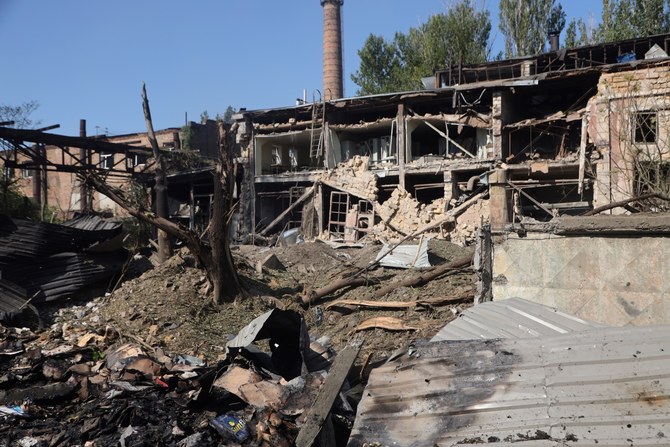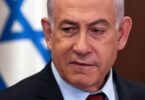Andrew Hammond
A year and a half since Russia’s invasion, there are growing signs that the Ukraine war could extend into a third year in February 2024. However, while a peace deal seems far-fetched right now, much thinking is underway across the world about the shape of such an agreement, from Beijing to Brussels and Washington to Warsaw.
A broad sweep of 20th century history shows that wars that have ended in conclusive, lasting ways have generally been preceded by decisive military victories on the ground. A standout example here is the allied victory in the Second World War. Conversely, wars that have ended through negotiations and diplomatic pressure, without clear-cut military outcomes, can quite often lead to long periods of frozen conflict and/ or instability. This includes the Minsk Agreements, which were brokered with the help of Germany and France, after Russia’s incursions into Eastern Ukraine in 2014.
Of course, this pattern is not historically predetermined and there are exceptions. For instance, there was lasting peace without a decisive military victory in the Finnish-Soviet Winter War of 1939-1940. This began with a Soviet attack on Finland and ended with the Treaty of Moscow, which gave the Soviet Union the key territories it wanted, while Finland retained its independence. Set in this context, the current Ukraine-Russia war appears unlikely to see an overwhelming conventional military victory for either side any time soon. To be sure, the Ukrainian counteroffensive has made some significant headway in recent months. But Ukraine’s progress has been uneven so far, not least because of heavy military mining by Russia. Ukrainian Defense Minister Oleksii Reznikov said on Sunday that his nation’s soldiers have been unearthing five mines for every square meter of land in some places.
Despite the growing signs that the conflict may well extend into 2024, some key figures – including former US Secretary of State Henry Kissinger – believe the war could end this year. The big reason for this, in Kissinger’s view, is the involvement of China in the Ukrainian peace process following the release of Beijing’s 12-point position paper published on the one-year anniversary of the start of Russia’s invasion earlier this year. In May, Kissinger said: “Now that China has entered the negotiation, it will come to a head, I think, by the end of the year. We will be talking about negotiating processes and even actual negotiations.” While Kissinger’s prediction remains a possibility, it would require vast preparation work in the coming months.
The recent Jeddah dialogue, which was a widely welcomed attempt by Saudi Arabia to push this agenda forward, was not technically a peace negotiation, since Russia was not formally involved. It was, however, an important exercise to broaden diplomatic support for a peace process, including the attendance of the US and other NATO allies. It is potentially significant that China attended the meeting too and, according to reports, participated constructively, alongside several states that have previously insisted on neutrality, such as India, Brazil, Indonesia, Egypt, Chile, Mexico and Zambia. While key Western governments attended the Jeddah talks, there is a significant body of opinion in many of these countries that Ukraine should not rush into a potentially messy peace agreement with Russia. This was reflected in an important report, released in July, by the Chatham House think tank, which featured contributions from more than half a dozen key thinkers, including Simon Smith, a former UK ambassador to Ukraine and ex-director of the Russia file in the UK’s Foreign and Commonwealth Office, and Eastern European expert Kataryna Wolczuk.
A starting point for this analysis is that the best outcome of the war is a comprehensive, clear Ukrainian victory on the battlefield. By contrast, a protracted or frozen conflict benefits Russia, as does a ceasefire or negotiated settlement on Moscow’s terms. The report’s argument that the best outcome is a full, clear Ukrainian victory on the battlefield is not just to preserve Ukraine as a sovereign state. Moreover, wider European and global security is threatened, including the viability of the rules-based international order that has been in place since 1945. So, a potential precedent is at stake that could encourage other states with extraterritorial intent.
The nature of the peace deal advocated in the report therefore includes the following essential elements. Firstly, the removal of Russian forces from the occupied territories, the reintegration of those territories into Ukraine, and a recognition of the principle of respect for the country’s sovereign independence and pre-2014 territorial borders. Secondly, better defense against wider Russian military and nonmilitary threats, including the protection of economies and trade routes. Ukraine will also need future security and political guarantees. So, the plan’s chances of success, the report argues, will be greater if Ukraine’s aspirations for NATO and EU membership are delivered, as previous skeptics like Kissinger have now argued too. The study makes clear that the quest for peace is full of challenges. Any permanent or interim solution that partially preserves the current battlefield status quo will allow Russian forces to regroup, leaving Ukraine less than fully sovereign.
This may merely postpone later offensives. Moreover, the eventual outcome will have profound global implications, as senior officials such as former NATO Secretary-General George Robertson have separately argued. The report makes clear that the argument that sacrificing Ukraine will save the world from a broader conflict is fundamentally flawed. Therefore, the fine details of any eventual Ukraine-Russia peace will really matter, whatever the timing. A bold agreement that benefits Ukraine while safeguarding Euro-Atlantic security may be key to any potentially lasting peace in the longer term.
Arab News







